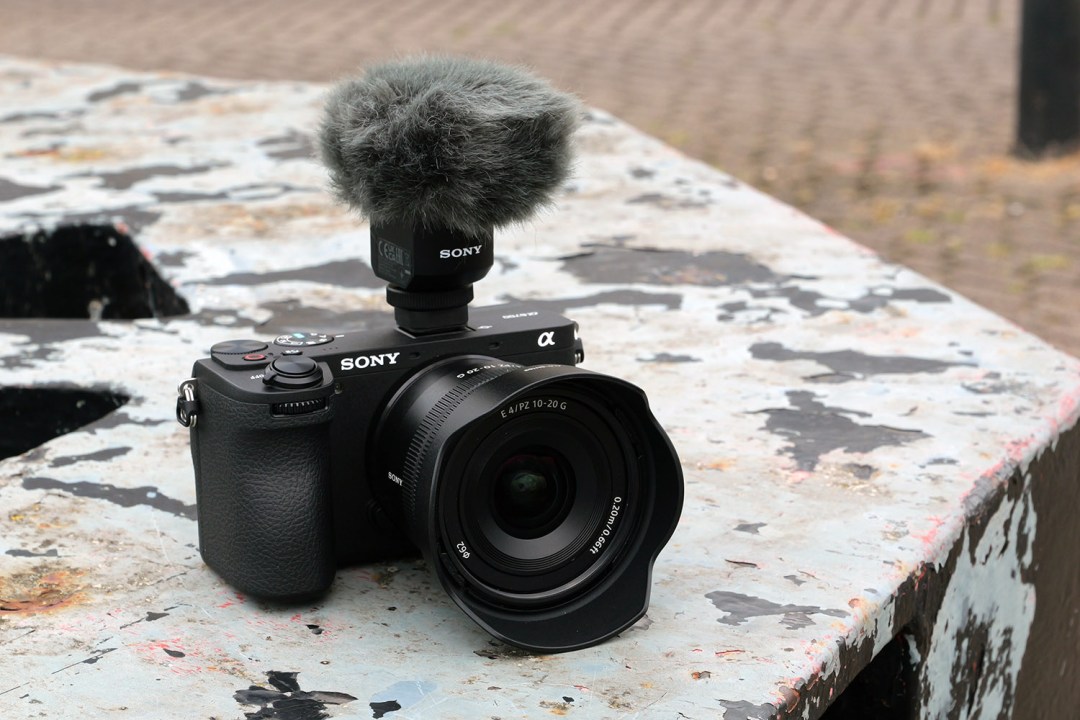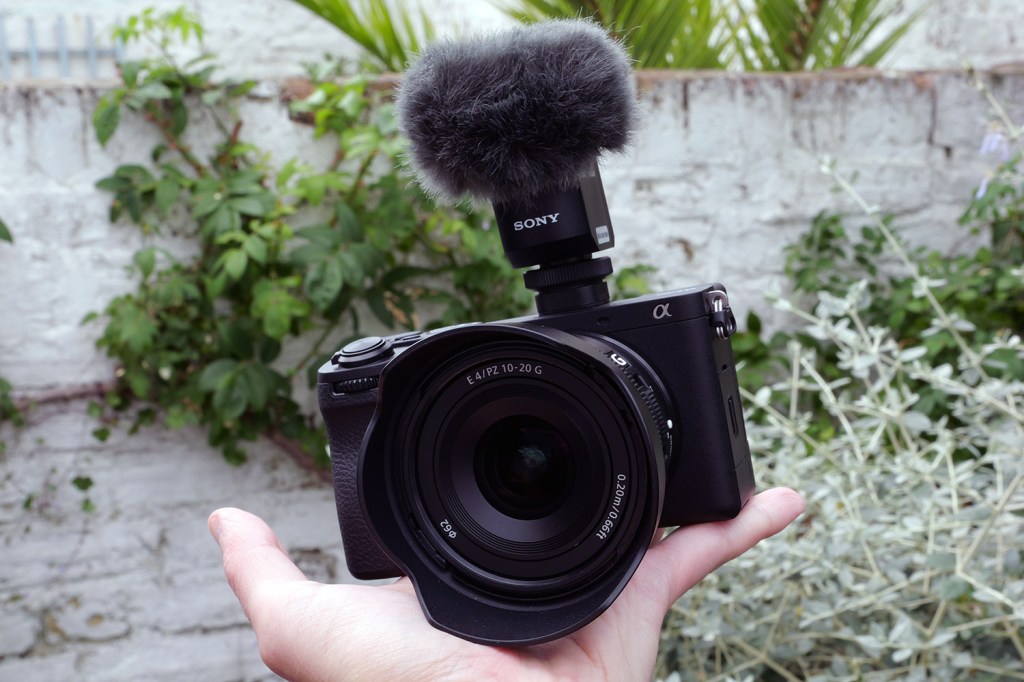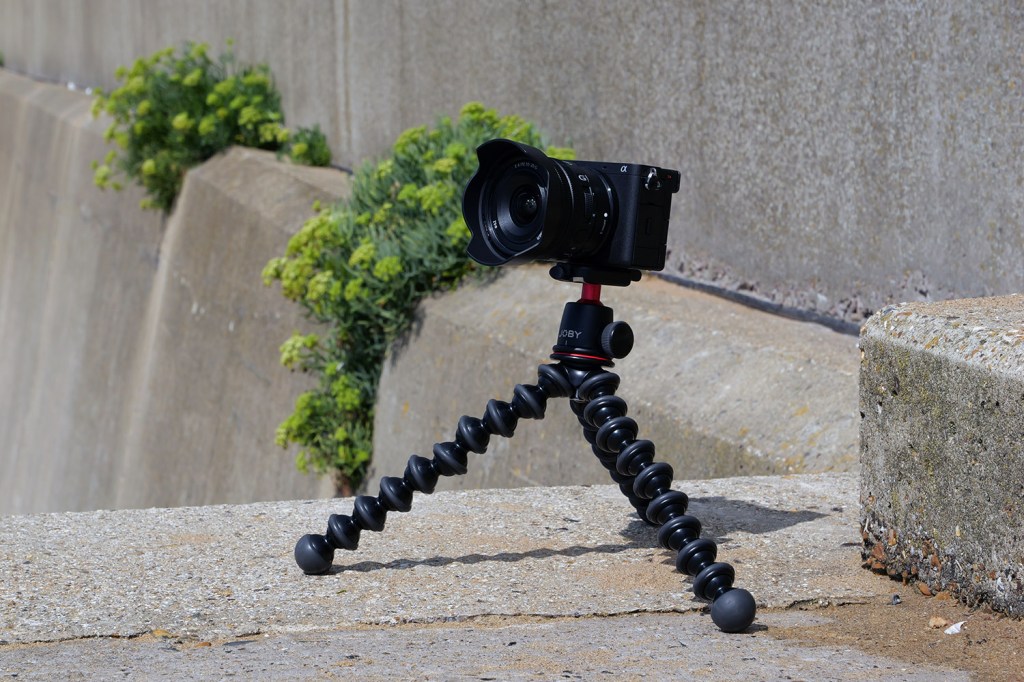Sony a6700 review: a fresh flagship for APS-C
A cracking crop sensor model

Sony’s full-frame mirrorless cameras might hog the limelight, but the brand’s series of more affordable, more compact APS-C sensor models has just received a major glow-up courtesy of the A6700.
Officially Sony’s first new flagship APS-C camera in around four years, this 26MP model brings a hefty arsenal of features and innovations with it to justify that top billing: a new BIONZ XR processor, AI-assisted autofocus with 759-point array and 10-bit 4K video at up to 120fps. Does that make it the best affordable APS-C model for enthusiasts?
Design and handling: more of the same

For better or worse, Sony hasn’t strayed far from its established design language for the A6700. In contrast to its full-frame mirrorless cameras, which come in a range of shapes and sizes, Sony’s APS-C cameras all look pretty much the same: compact and squared-off, with minimal protrusions for a hand grip and viewfinder.
This approach keeps the size down (although the A6700 is slightly chunkier than its predecessor, the A6600) but many users will prefer the more ergonomic DSLR-style shape used by some competitors; we think that classic shape just feels better in the hand than this one, but there’s nothing truly awful about the Sony design: stick a decent-sized lens on the front and it feels well balanced in your hands. The body is well built too, with a magnesium alloy shell that’s rain and splash resistant, if not actually waterproof.
One welcome change is that the 3in LCD touchscreen now flips to the side rather than up, which means it won’t get blocked by a hotshoe-mounted flash or mic when facing forward. Another is the addition of a command dial on the front of the camera (to join the one on the back), which can be set to adjust a range of settings and represents a healthy boost to usability. There’s also a sub-dial beneath that main mode dial that switches quickly between stills, video and S&Q (slow and quick) shooting modes, and the video record button is now located on top and much easier to push than the A6600’s side-mounted button.
Features, connectivity and battery life: A stable showing


Like the A6600, the A6700 comes with 5-axis in-body image stabilisation which Sony says gives it about five stops of compensation. You might think things would have improved a little over four years, but the only real difference here is the addition of an Active mode, which adds a little extra compensation designed to work best when shooting video; a noticeable crop is applied to the frame as a result. The A6700 does, however, come with a built-in gyro sensor able to capture motion data and embed it in video files, allowing users to add very effective stabilisation in Sony’s Catalyst Browse post-production app.
The viewfinder appears to be exactly the same as the A6600’s, while the screen gets a small resolution increase from 921,600 dots to 1,036,800 dots. It also gains a lot more touchscreen UI features, which does make using the camera noticeably more touch-friendly by allowing more settings to be tweaked with a swipe or tap.
Connectivity is pretty much as you’d expect: there’s a fast 5Gbps USB-C port, micro HDMI, 3.5mm headphone and mic sockets and, on top, the Sony Multi Interface Shoe, which allows you to use the brand’s digital shotgun mics without the need for connecting a cable. On the wireless front there’s dual-band Wi-Fi and Bluetooth 4.2. There’s a single SD slot, which does seem a little stingy given this camera’s flagship status.
The camera runs on Sony’s NP-FZ100 battery, which serves up around 500 still photos or 90 minutes of video recording on a full charge. That’s respectable in our eyes, especially as you can easily top it up on the go via the USB port.
Performance: Autofocus FTW


The A6700 features the BIONZ XR processor previously seen in higher end Sony cameras like the A1, A7S III and A7 IV. It’s the cheapest camera so far to come with this processor, which puts some clear air between it and the A6600. It speeds up general performance and opens up new possibilities in terms of video codecs and frame rates (more on those in the next section).
One thing it doesn’t speed up is continuous shooting, which as on the A6700, remains at a decent but not class-leading 11fps. You can however capture a large buffer of images now: up to 1000 JPEGs or about 60 compressed lossless RAW files – and the fact that the A6700 has Sony’s latest flavour of AF means far more of your shots will be in sharp focus.
Autofocus now uses 759 points across the sensor and also makes use of AI-assisted subject detection like trains, insects and birds in addition to the standard human bodies, faces and eyes. It does so brilliantly quickly and remains locked to them as they move around (or in and out of) the frame. At the time of writing, it’s probably the best autofocus setup you’ll find on any hybrid APS-C camera out there.
One thing to note is that, with no cooling options, users who want to record long uninterrupted video clips or use the A6700 as a webcam will have to watch out for potential overheating. Record in 4K at 120fps or 60fps and you’ll likely be forced to tap out after 30 or so minutes for a cool-off period if you just leave the camera recording.
Image quality: Special FX

The 26MP APS-C sensor has been seen before on Sony’s FX30, a video-centric Cinema Line model aimed at filmmakers, and the A6700 brings a lot of that camera’s image performance to a smaller, cheaper and more photography-focussed body. For example, the A6700 features a mechanical shutter and viewfinder, two features prized by still photographers and not found on the FX30.
Sony sent us our review sample with a 10-20mm ultra-wide zoom, which is ideal for vlogging but frustratingly limiting when attempting to fully test a camera where stills are arguably just as important as video. Still, we saw enough during our time with the A6700 to suggest that few people will complain about its image quality with either photos or video.






There’s good dynamic range, colour and detail, even in lower light situations; it doesn’t quite match the Sony full-frame models for all-round impact, but in general the A6700 gives an excellent account of itself
Photos can now be shot in the space-saving HEIF (High Efficiency Image Format) file type, which is a first for APS-C cameras, while video can be recorded with 10-bit 4:2:2 colour depth and in a range of picture profiles include S-Cinetone (which we shot all this sample footage in). There’s also the option to shoot 4K clips at up to 120fps (with a major crop applied to the frame).
Sony A6700 verdict

While we might’ve expected more great leaps forward from the first new Sony APS-C flagship in four years, the A6700’s all-round showing is strong considering the asking price. This hybrid camera possesses a truly top tier autofocus setup alongside a great raft of video shooting options and a high-quality sensor that delivers in most shooting conditions.
The A6700 isn’t Sony’s most attractive or exciting mirrorless camera by any measure, but it’s a very solid product.
Stuff Says…
An effective and timely update for Sony’s APS-C line-up
Good Stuff
Class-leading autofocus
Wide range of video modes
Fairly compact body
Bad Stuff
No cooling solution
Single SD card slot
Sony a6700 technical specifications
| Sensor | 26MP APS-C CMOS |
| Lens mount | E-mount |
| ISO range | 50-102,400 (extended) |
| Continuous shooting | 11fps |
| Video recording | 4K/120 |
| Screen | 3in vari-angle touchscreen |
| Viewfinder | 2.4m-dot OLED |
| Storage support | SD UHS-II |
| Connectivity | USB-C, micro HDMI, 3.5mm mic, 3.5mm headphone, Bluetooth, Wi-Fi |
| Dimensions | 122 x 69 x 75.1mm/493g |



